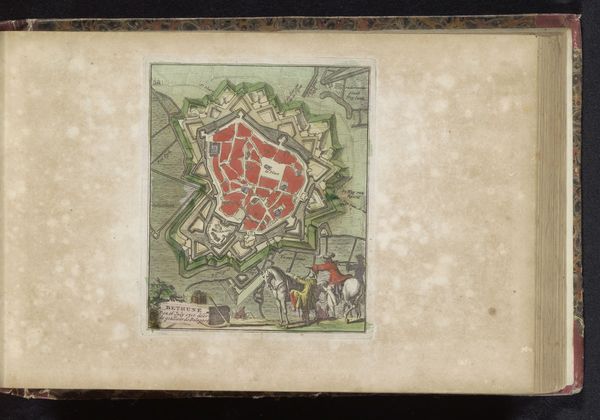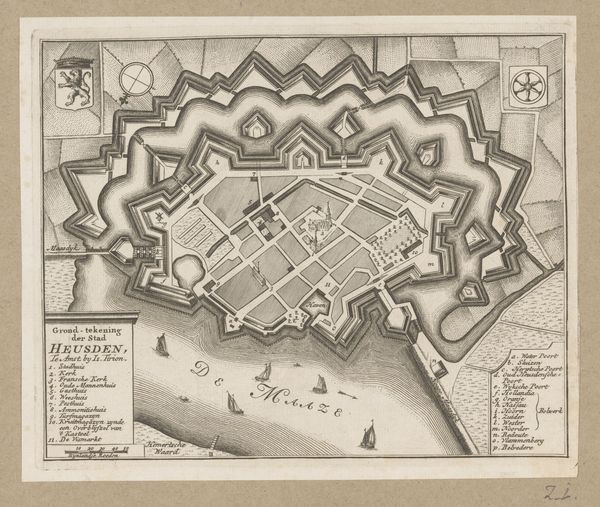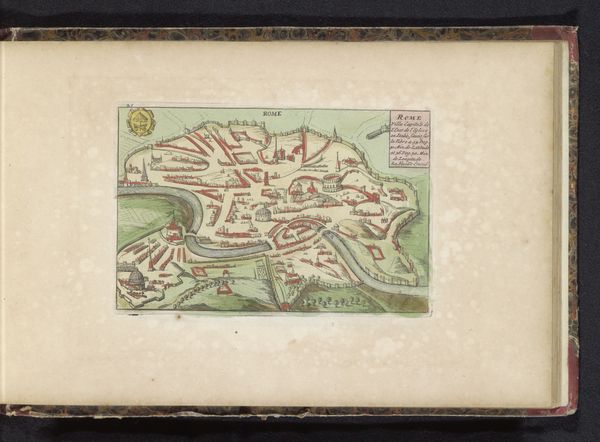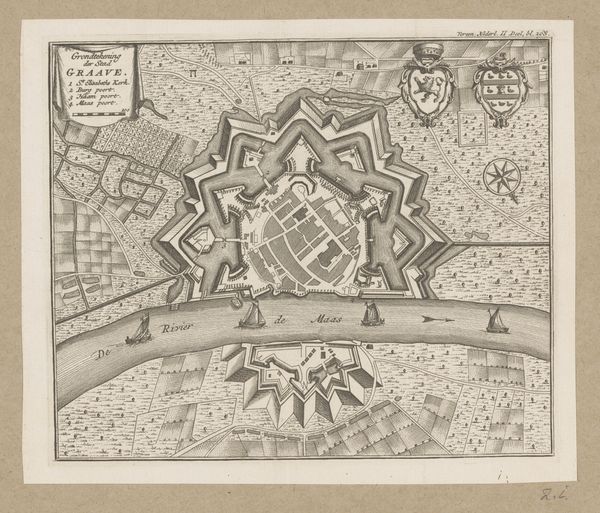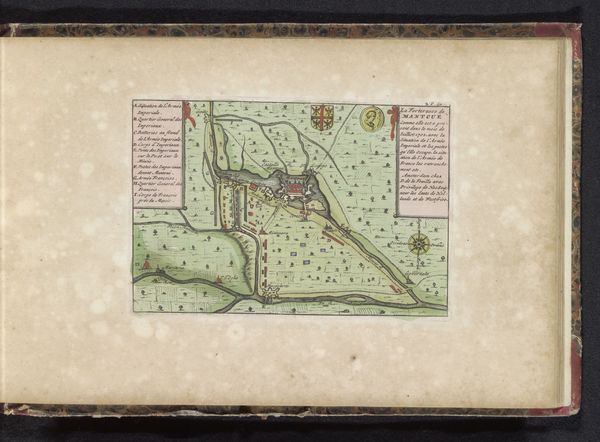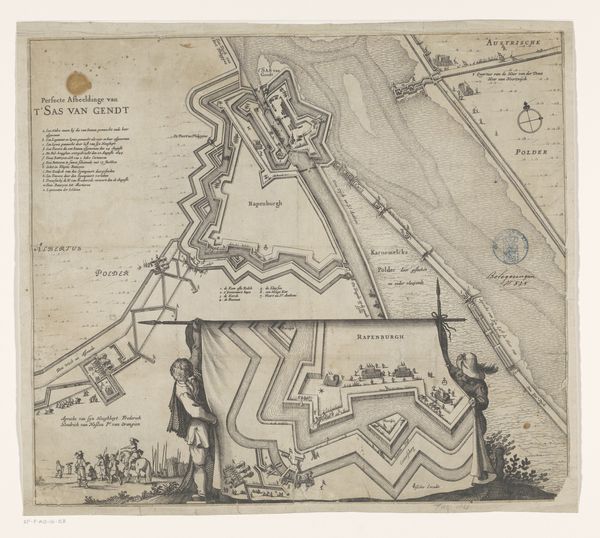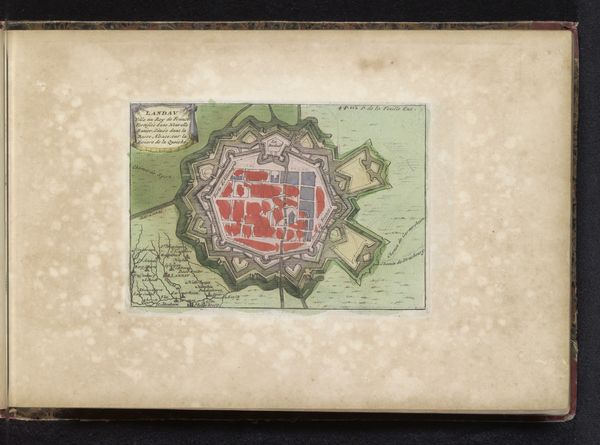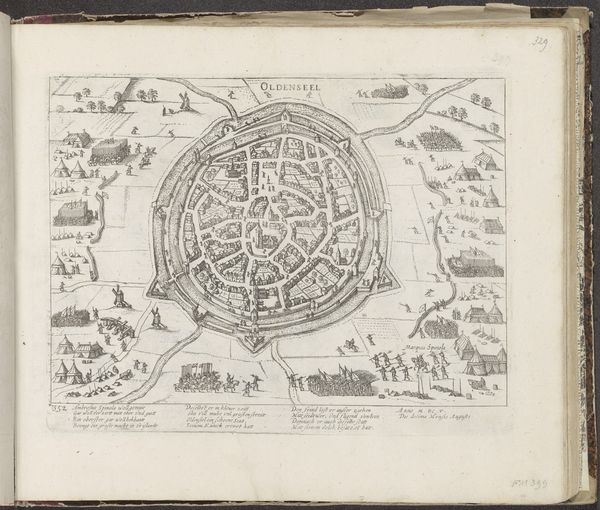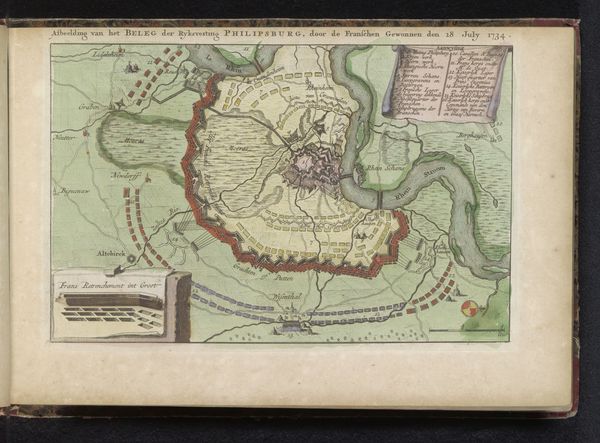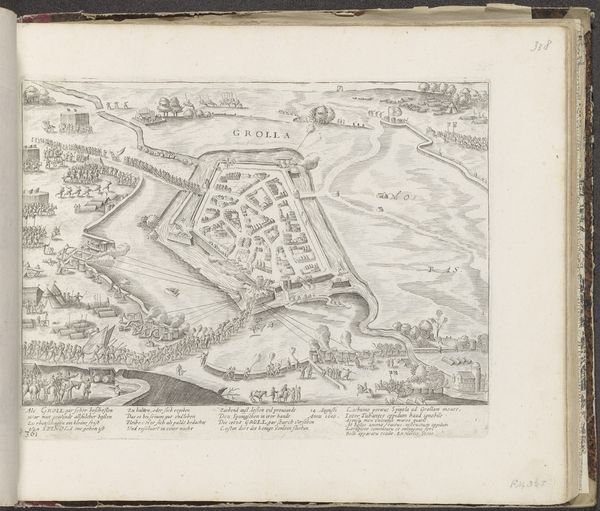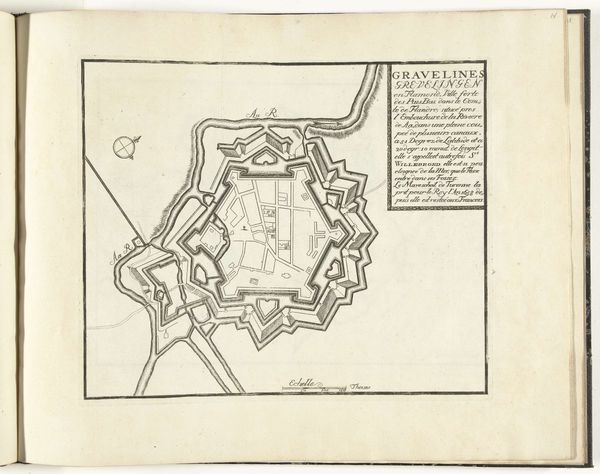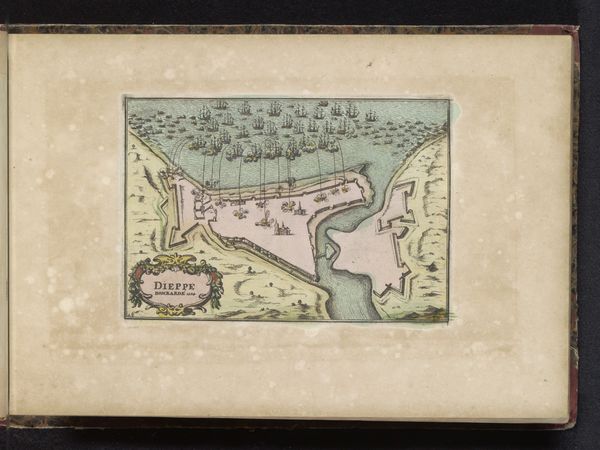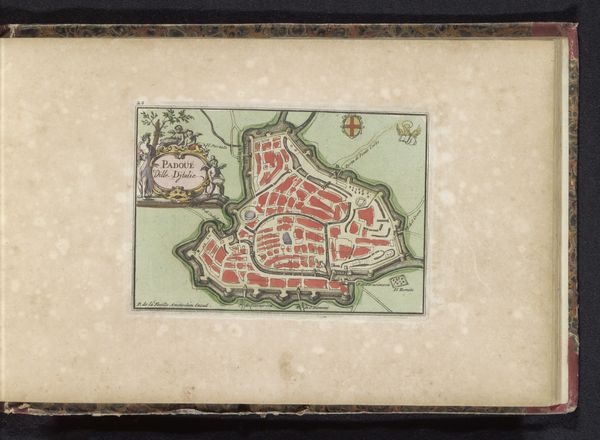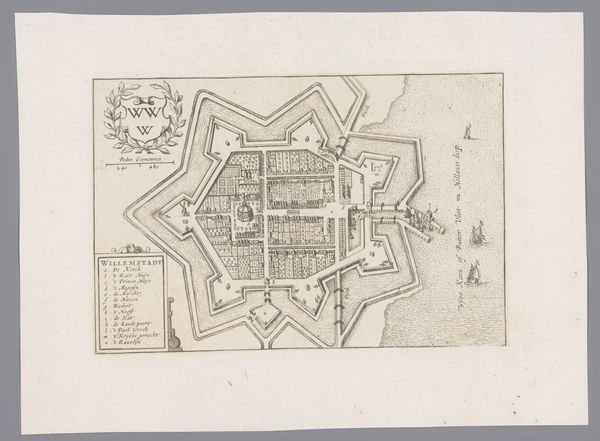
drawing, paper, watercolor
#
drawing
#
water colours
#
paper
#
watercolor
#
coloured pencil
#
cityscape
Dimensions: height 115 mm, width 165 mm
Copyright: Rijks Museum: Open Domain
Curator: This delicate watercolor and colored pencil drawing offers a detailed look at the "Plattegrond van het fort Dünamünde bij Riga," or a plan of the Dünamünde fort near Riga. Although the artist remains anonymous, we believe it dates between 1700 and 1735, placing it firmly in the era of shifting Baltic powers. Editor: My first impression is… intricate, and a little suffocating, if I'm honest. There's a sense of being watched from all angles. It is visually fascinating, this fortress emerging from the land, but also rather ominous, given its implied purpose. Curator: Exactly. Its design showcases the cutting edge of 18th century military engineering, each pointed bastion strategically positioned for optimal defense, an instrument of colonial occupation, right? You notice how this bird's-eye view flattens the town it surrounds— the drawing highlights power and the science of control. Editor: And control extends to how the area around it is also neatly marked out, boxed into place, including the Baltic Sea—an act of asserting a certain level of assumed dominance and authority that is difficult to ignore. But do you think that the bright colors actually diminish the seriousness? Curator: On the contrary; color in cartography served a very particular function back then. These watercolors emphasize the different elements of the fortification and surroundings – perhaps distinguishing ownership or political jurisdictions – and are part of the symbolic language of power. It wasn’t only about accuracy. Editor: True. I'm still drawn to how isolated and self-contained it seems. The image speaks volumes about that era's investment in both defense and surveillance. There is very little nature actually present here. The entire picture is a construction site, one ready for active usage at a moment’s notice. Curator: The stark lines and the precision speak volumes about a society increasingly reliant on engineering and strategy to solidify its power. You might almost forget people lived here. Editor: Thinking about this, it gives a completely different feel than one usually finds in art. A rather cold and isolating reflection from history. But these planned fortifications come with all types of emotional, societal baggage attached. Curator: Absolutely. It's a testament to how art—even seemingly objective maps—can reveal a great deal about the values and anxieties of its time. Thanks for the insight!
Comments
No comments
Be the first to comment and join the conversation on the ultimate creative platform.
